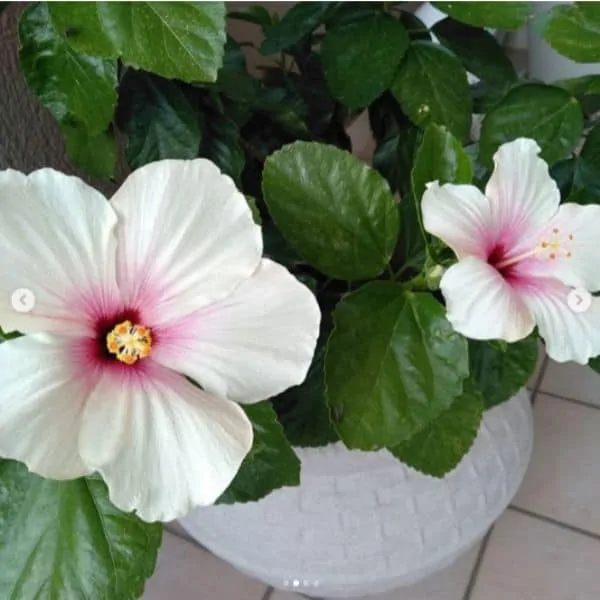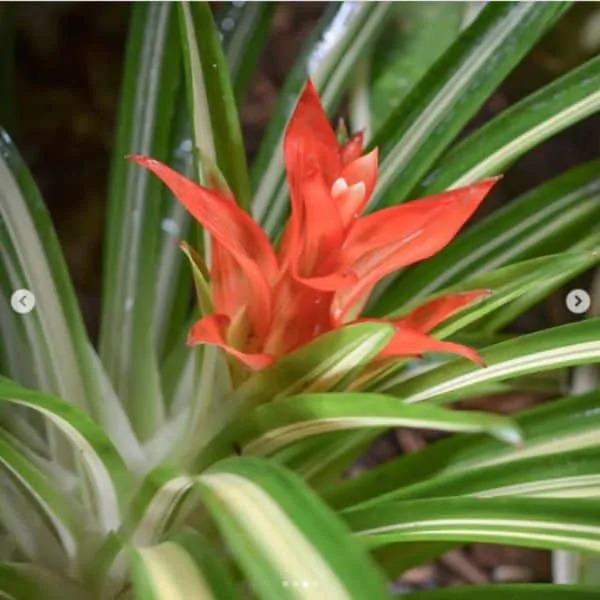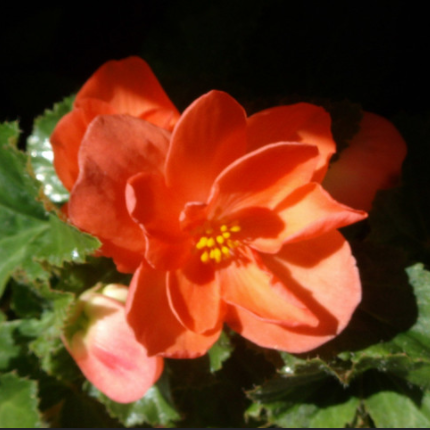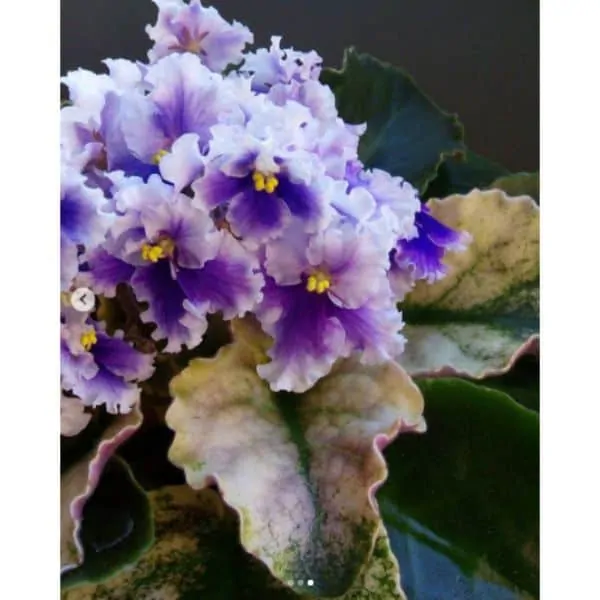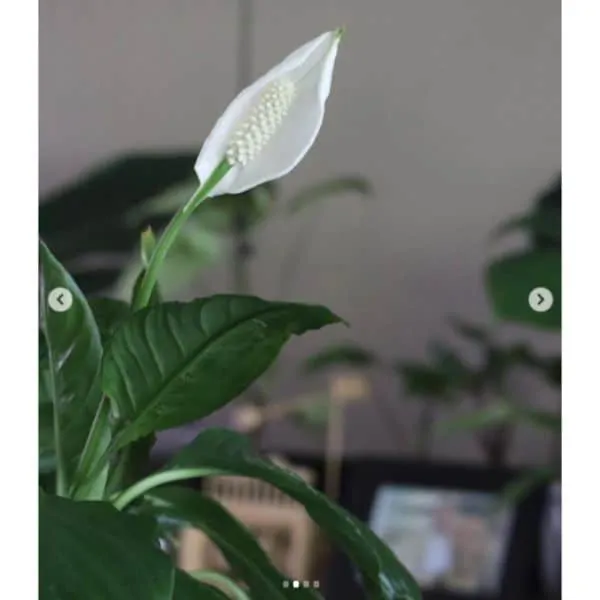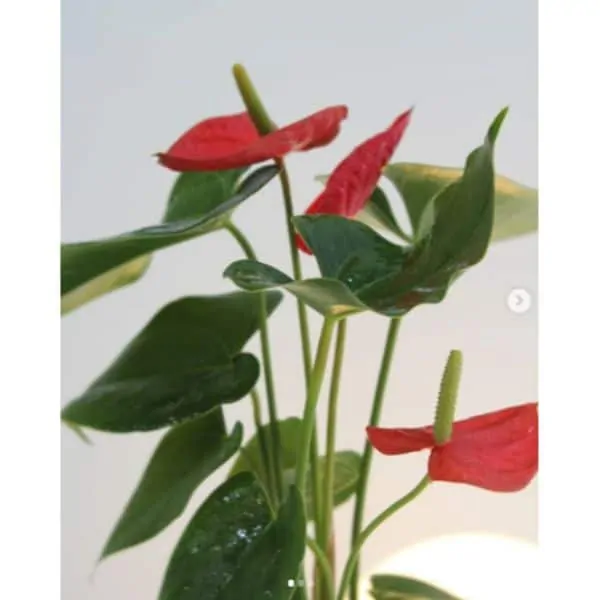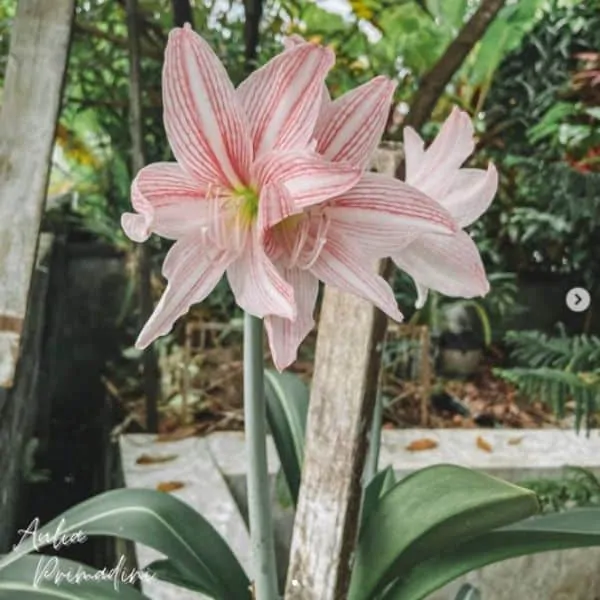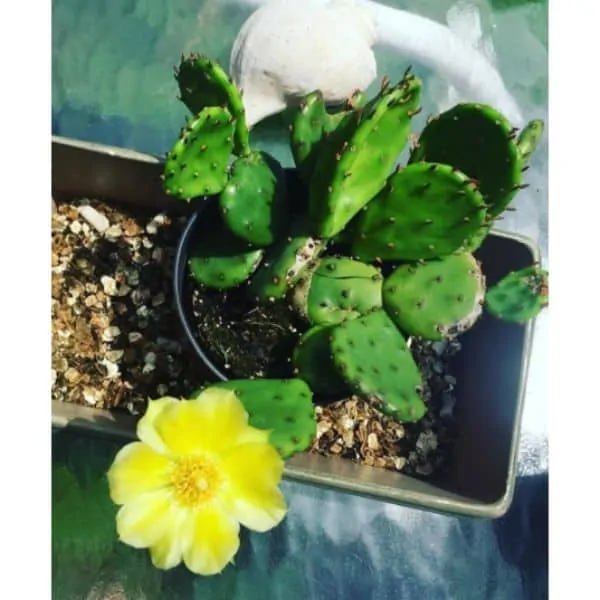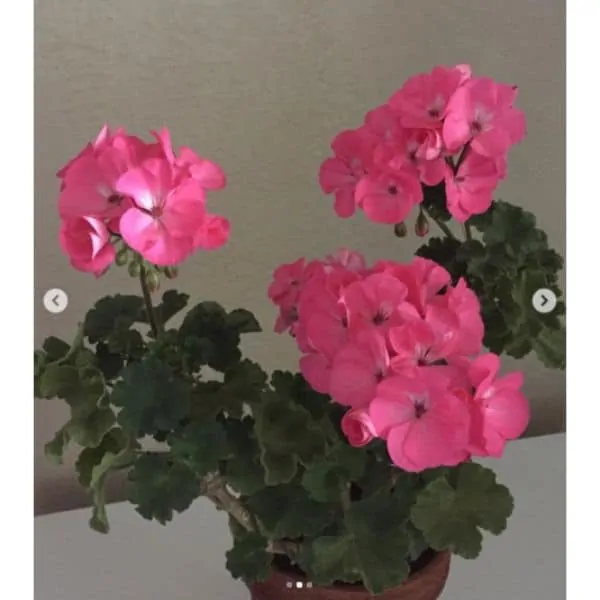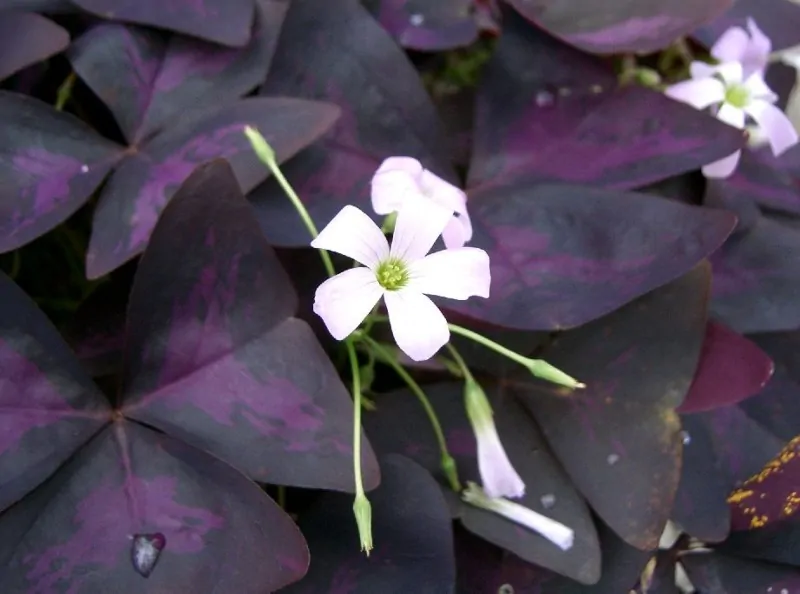10 Flowering Plants That Are Easy To Keep Indoor
Have a look at these easy-to-maintain flowering plants and get inspired to get or to gift one!
Level up your indoor garden with colorful flowers, grown at home! Unless you are growing vegetables, pretty flowers are the crowning achievement of gardeners, and having a few will surely impress your friends! Start with some classics and branch off later with more exotic or unusual flowering plants!
Add some life to a dull office or corner, or to have something to focus on in a group of green leaves with spots of color. And the best colors a gardener can use are flowers! Get yourself some flowering plants or give one as a gift to someone who could use it. Take a look at this list and pick your favorite! They are all chosen to be easy to maintain and we have talked about some of these before for this exact reason. Each entry comes with descriptions, care instructions, and summaries for easy revision.
1. Bromeliad Flowering Plants
Bromeliads are colorful, tropical plants. Their leaves are generally sharp and thin, often described as looking like a pineapple. The center leaves turn red or orange when it’s time for the plant to bloom. Some kinds have a little cup at the top of the stem, that helps with collecting water.
They only flower once in their lifetime, then they dry off, but they also grow pups, like Aloe plants. These pups then grow in an adult bromeliad, that flowers and dries and has pups. The cycle continues. There are many species of bromeliad and most grow wonderfully as indoor flowering plants. And there are as many ways to care for these plants as there are kinds of plants. But some facts remain true about all. They all need well-draining soil, warm and humid temperatures, and plenty of water.
Care
- Mist your bromeliads regularly and fill the top cup, called a tank, as well.
- Keep away from direct sunlight, but allow plenty of light.
- Plant them in unglazed ceramic pots to allow the soil to ventilate.
- Water when the top 2 inches of soil are dry. Use plenty of water and allow it to flow out the draining holes. Mist every other day.
- General indoor temperatures are fine.
- Fertilize rarely, with 1/4 strength organic liquid fertilizer.
- Do not use metal watering containers and never fertilize the tank.
Light
Bright indirectWater
Keep soil damp; mist oftenTemperature
Warm2. Begonia Flowering Plants
Begonias are known for their colorful flowers and their bight green, waxy or fluffy leaves. Their leaves are usually rounded or curly, and the flowers often have multiple layers of petals. There are many types of begonias, some making good outdoor plants as well, but overall, these flowering plants come in three kinds: tuberous, fibrous and rhizomatous. The latter two make better houseplants and are easier to take care of.
Care
Begonias need three things to thrive indoors: humidity, good light, and good soil.
- Plant in well-draining soil and pot
- Water once the top 3 to 4 inches of soil are dry since overwatering can easily lead to root rot.
- Place in a well-lit place. Most begonias can take partial sun to full sun if the temperatures aren’t too high.
- Create ideal moisture conditions by placing a pebble tray, like the one described in my rosemary care guide.
- Do not mist fully begonias, as they become susceptible to all kinds of fungus.
- Indoor temperatures are generally fine.
- Begonias are heavy feeders, so fertilize often for best blooms.
Light
Partial shade to partial sunWater
When soil is 3-4 inches dryTemperature
Indoor temperatures3. African Violets Flowering Plants
African violets are known as the princesses of indoor flowering plants and thought to be pretentious. In fact, they just have some particular needs and don’t tolerate inconsistency or forgetfulness as well as most other plants on this list.
These little flowering plants are easy to recognize by their violet flowers and fuzzy leaves. They almost always stay small and they have an overall cute look that is unmistakable. If you are careful with them and pinch the spent blooms away, you can have them flowering almost all year round.
Care
I said before, African violets can be a little touchy and predisposed to mold and rot, but with proper care, they will be just fine.
- Plant in rich, peaty soil. Use this list to pick the one you like best.
- Water carefully, with lukewarm or room temperature water that has been allowed to sit for 48 hours. A glass bottle is perfect for this.
- Be careful not to spill any water on the leaves. Their fluff makes them prone to molds.
- Keep the soil moist but not wet, so ideally water little by little every other day. Not watering enough can be as fatal as too much water in this case.
- Place 3ft away from the south or south-west facing window for ideal bright filtered light.
- Keep in a warm room over winter, away from drafts. African violets are very sensitive to low temperatures.
- Fertilize with a phosphorus-rich fertilizer as often as allowed for maximum bloom.
Light
Bright filteredWater
Constant, small amounts, lukewarmTemperature
Warm indoor temperatures4. Peace Lily Flowering Plants
We talked about peace lilies before, because they are one of those plants that not only look good but also purify the air. They are a topical plant, easy to recognize by its wide, oval, waxy leaves, and bush-like appearance. These pretty plants also flower every once in a while, with white flowers that look much like their leaves, with an additional stem in the middle.
Be careful when handling Peace lilies, they are toxic and the sap can irritate the skin!
Care
Peace lilies are practically impossible to kill because they can tolerate low light and little water. But to get them to bloom you will need a bit more than that.
- Use rich, well-draining soil.
- Keep the soil moist, but not soggy, and use unglazed ceramic pots with good drainage.
- Mist the leaves every other day, using filtered water to avoid chemical buildup on the leaves.
- Place in bright, indirect light. East facing windows are great for this in summer, and in winter a south-west facing window is ideal.
- Keep at a constant temperature of over 60 °F (15 C), ideally above 70 °F (21 C).
- Fertilize occasionally with a general fertilizer.
Light
Bright indirectWater
Once to twice a week, mist every other dayTemperature
60 °F (15 C), ideally above 70 °F (21 C)5. Anthurium Flowering Plants
Anthurium was featured on the list of small indoor plants as well and for good reason. It doesn’t grow too big, and it likes to climb, making it a great backdrop for other plants. It’s easy to describe this flowering plant as a cross between orchids and peace lilies. It has the behavior of orchids and their preference for climbing and areal roots, but it looks much like the peace lilies. The leaves are medium-sized, round and bright, waxy green, awhile the flowers look exactly like the leaves with an extra stem in the middle.
Be careful when handling Anthurium plants, they are toxic and the sap can irritate the skin!
Care
Anthurium is a tropical plant used to living on the forest floor, so it needs humidity and filtered light.
- Place away from direct sunlight, but in bright indirect light to promote blooming.
- Water when the top inch of soil is dry and allow the excess to run out the draining holes.
- Mist every other day to keep humidity high.
- Be careful not to overwater, as anthurium is susceptible to root rot.
- Plant in a mix of one part potting soil and one part orchid soil.
- Keep in warm temperatures of about 70-90°F (21-32 °C).
- Use a phosphorus-rich fertilizer in the summer months to encourage blooms.
Pro Tip: Anthurium can live with partially areal roots, so when you think it’s time to repot, find a dry branch, about two fingers thick, clean it by pouring boiling water over it, dry and cool it and wrap a root or two around it. Stick it in the ground and bury the rest of the roots.
Light
Bright indirectWater
Keep soil moist but not soggy, mist oftenTemperature
70-90°F (21-32 °C)6. Amaryllis Flowering Plants
Amaryllis comes in a variety of colors, but all look mostly the same: a half-buried bulb, with a few leaves and a tall, central stem with a bunch of flowers at the top, in a crown-like formation. The leaves are waxy and wide, shooting straight from the bulb. It can have up to ten cone-shaped flowers in warm colors, usually red, orange, or pink.
You are likely to buy this plant in full bloom. Its impressive flower bunch can last up to a few weeks in winter, but once they start to wilt, it will need some extra care so it flowers again.
Care
The first thing your Amaryllis will need is rest. Cut off the dried flower stem, about 2 inches above the bulb, and store the plant in a cool, dry, dark place for 8 to 10 weeks. During this time, you will not need to water it, only prune away the leaves as they dry off and remove the bulb from the ground when they are gone.
- Revive your plant by moving it in a fresh pot with rich soil. Bury the bulb only 3/4 of the way and leave the pointy end out.
- Move to a well lit, warm place.
- Water sparsely until the first growth starts, then more abundantly. Keep the soil damp all the time.
- Place in bright indirect light and rotate the plant every other week to make sure it grows straight.
- Use a stake to keep the flower stem straight.
- After one month, start fertilizing using any fertilizer you like, as often as the instructions allow.
Light
Bright indirect to medium sunWater
RegularlyTemperature
Indoor temperatures7. Desert Cacti Flowering Plants
Some species of cactus bloom if treated properly. We talked about cacti and succulents before, and this guide contains helpful information on just how much these little guys can take. But with a little more attention and maybe some feed, cacti bloom with spectacular flowers in bright colors. The contrast is all the more striking as cacti flowers are often soft and delicate, as opposed to their spikey body.
Care
Desert cacti need a lot of light, a warm environment, and enough water to bloom.
- Use potting soil for cacti and succulents to ensure it is well-draining enough.
- Place in a sunny spot. Most cacti need 6 to 8 hours of full sun to thrive. If you don’t have a window that will give them that, you can supplement it with a grow lamp.
- Water when the soil is fully dry. Soak the soil and allow excess water to flow out the draining holes, then discard the water.
- Cacti don’t need misting. In fact, do your best to have a little water reaching the stem and flowers as possible.
- Keep indoors if the temperature has any chance of dropping below 60 °F or 15 °C. Ideally, cacti need a temperature of over 70 °F or 21 °C.
- From spring to fall, feed with a loamy fertilizer.
Light
Full sunWater
Approximately twice a weekTemperature
Over 70 °F or 21 °C8. Hibiscus Flowering Plants
This tropical plant sports large, flashy, and brightly colored flowers as well as lush green leaves. It can be grown outside, but it makes a great potted plant as well. In places with cold winters, hibiscus has a better chance of surviving indoors anyway. With proper care, hibiscus plants will bloom in summer wilt delicate, soft flowers.
Care
Hibiscus likes a lot of water, but good drainage. It needs constant, fresh water, and full sun to grow and bloom. If you have a Chinese Hibiscus and want to learn more about it, check out this care guide for more information!
- Plant in well-draining soil enriched with a slow-release, potassium, and nitrogen-rich fertilizer.
- Water as often as twice a day if the potting soil dries out under the summer sun and when the first two inches of soil are dry in winter.
- Throw away excess water in the tray.
- Keep in direct sunlight, but protect from the mid-day summer sun. Provide at least six hours of bright light in summer.
- Fertilize once the fertilizer in the pot has run out (usually after six weeks, but check instructions).
- Hibiscus likes temperatures of 60-90 °F or 16-32 °C.
- Don’t rush to replant hibiscus. It likes to be snug in its pot and when you do replant, only go up one pot size.
Light
Full sunWater
Often in summer, when dry in winterTemperature
60-90 °F or 16-32 °C9. Geranium Flowering Plants
Geraniums are the staple of so many homes and balconies especially, but they can be grown indoors as well. They have round-shaped, curly leaves and spherical blooms. The flowers come in all shades of red and white, and combinations, the most common ones being the red varieties. There is a type of geranium that grows as a hanging plant. This is a great option to grow them, as they can get a bit big, and you can add a little twist to your apartment with them.
Geraniums are a great bug repellant because the smell of their leaves discourages mosquitos, but they are also toxic for pets. Keep out of reach.
Care
Basic care for geraniums is very easy. water when dry and make sure they don’t freeze. Since you’re growing them indoors, that isn’t a problem anyway.
- Plant in rich, well-draining potting soil. There are specifically designed mixes available to buy.
- Keep in full sun for at least 6 hours every day.
- Water approximately twice a week, or when the soil is starting to dry. This depends on the humidity and temperature in your house and on how much the plants feed.
- Fertilize with organic material, and be careful not to use an acidic fertilizer. Again, specific fertilizers are available.
- Prune away dried blooms to encourage the next batch to grow and trim back the stems in spring to encourage new growth.
- Keep at above freezing temperatures in winter. In summer they need temperatures of 65-95 °F or 18-35 °C.
Light
Full sunWater
Twice a weekTemperature
65-95 °F or 18-35 °C10. Oxalis Triangularis Flowering Plants
We have an entire post dedicated to growing and caring for this plant, so check that one out for more detailed information. Oxalis is easily recognized by its purple leaves, which attract the name “purple shamrock”, although it is not related to clover. They are interestingly sensitive to light and contract at night, closing around the stem and reminding of butterflies.
Care
- Oxalis Triangularis needs a good amount of light, but not direct sunlight.
- Allow the top 1-2 inches of soil to dry out before watering to avoid root rot. Gently add water to the pot to avoid washing the soil away from the bulbs and pour small quantities.
- Purple shamrock needs a temperate climate of 60 to 75°F ( 15 to 24°C) but can survive as low as 50°F (10°C).
- Oxalis Triangularis will grow in any relatively fertile soil, but it prefers a rich potting mix or even a peat-based soil.
- Use a slow-release, organic fertilizer for best effects. Be careful to not over-fertilize as it can burn the roots!
Light
Semi-shade to indirect brightWater
Approximately once a weekTemperature
60 to 75°F ( 15 to 24°C)Final Thoughts
So, have you decided which flowering plants you want to add to your collection? Or which ones you want to give as a gift to someone special? Tell me all about it and ask any questions you have in the comment section below!

